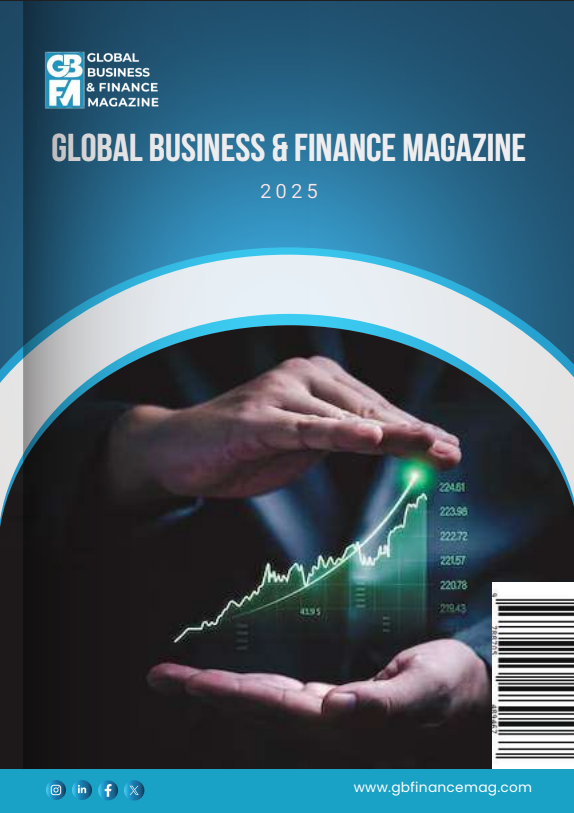Safe assets are the building blocks of modern financial markets. This column examines the sectoral dynamics of safe assets across advanced economies since the 1980s. It shows that foreign demand for these assets has steadily increased, with the financial sector playing a key role in meeting it. However, because financial institutions often back the safe assets they create with risky loans, this rising foreign demand can fuel domestic credit booms and contribute to macroeconomic instability. The results highlight the importance of carefully managing the creation of safe assets within the global financial system.
In the world of finance, the term ‘safe assets’ sounds dry and technical, but these assets play a pivotal role in the modern economy. Safe assets, broadly defined as those with highly certain payments, are the building blocks of modern financial markets due to their unique ability to be reliable stores of value, act as collateral in transactions, fulfil prudential requirements, and serve as price benchmarks (Gourinchas and Jeanne 2012).
But safe assets are not all alike. Some are supplied by the public sector — like central bank reserves or government bonds — while others come from the financial sector — like deposits or asset-backed securities. Safe assets can be held by households, firms, financial institutions, and, increasingly, by foreign investors. Who supplies and who holds safe assets isn’t just a technical detail — it can, in principle, be crucial for the economy.
Recent theoretical and policy research has raised concerns about the fragility of privately created safe assets (Gorton 2010, Gennaioli et al. 2013), the risks posed by growing foreign demand for safety (Bernanke 2005, Maggiori 2017), and the challenge of meeting the increasing safe-asset demand without jeopardising financial stability domestically (Moreira and Savov 2014, Diamond 2020). Yet despite the significance of these issues, there is no comprehensive empirical evidence on which sectors issue and hold safe assets — or how the sectoral composition of this market affects the real economy.
In a recent study (Castells-Jauregui et al. 2024), we address these questions by analysing the sectoral composition of the market for safety in 21 advanced economies since the 1980s. The study reveals surprising facts about who supplies safe assets, who holds them, and why this matters. The findings tell a story of growing foreign demand for safety met by an increasing supply from the domestic financial sectors of advanced economies and highlight the potential adverse macroeconomic effects of these developments.
We show that in all advanced economies, safe assets have grown markedly relative to GDP over recent decades while maintaining a stable share of total financial assets, amid increasing financialisation across the globe (Figure 1). This is consistent with previous work by Gorton et al. (2012) and Barro et al. (2022). Next, we examine who is behind this growth in safe assets and who the major players in the safe asset ecosystem are.
Figure 1 Total safe and risky assets, and the safe-asset share


Notes: Safe assets include currency, reserves, deposits, gold, special drawing rights, money market mutual fund shares, and bonds issued by governments and financial intermediaries. Risky assets are all other financial assets. The safe-asset share is the ratio of safe to total financial assets.
The safe asset ecosystem: Who is buying and who is producing safety?
We analyse the safe asset positions of different institutional sectors in the national accounting framework — households, businesses, governments, financial institutions, and foreign investors — to track each sector’s role in either creating or demanding safety. Here are the highlights:
- Foreign demand on the rise: Much of the growth in safe assets is driven by demand from abroad, both by other advanced economies and by emerging markets (like China). It seems that emerging markets hold increasing amounts of safe assets issued by the advanced economies in our sample. This ‘exported safety’ is largely facilitated by financial institutions, which respond to changes in foreign demand.
- The financial sector’s key role in safe asset markets: Financial institutions, including banks, are the largest holders and issuers of safe assets. On a net basis, they are supplying safety. They achieve this by issuing safe liabilities like deposits, which are partly backed by risky loans on the asset side of the balance sheet. This dynamic links safe asset creation to domestic credit expansions, potentially leading to financial instability if unchecked.
- Public safe assets have been rising since the Global Crisis: After the 2008 financial crisis, the public sector increasingly supplied safe assets through public debt and central bank balance sheets, partly replacing financial sector net supply. This shift suggests an important role for public safety in turbulent times.
- Households and firms as steady players: Unlike the other sectors, households and businesses hold a relatively constant amount of safe assets relative to GDP, and they do not contribute to the fluctuations in this market.
To illustrate these trends, Figure 2 shows that since 1980, the foreign sector’s net holdings of safe assets (safe assets minus safe liabilities) have been expanding strongly in the US, euro area, and the UK, as has net safe asset supply by the financial and public sectors. Households’ and firms’ holdings of safe assets have, on the other hand, remained flat.
Figure 2 Net safe asset positions of different economic sectors


Notes: The net safe asset position is calculated as safe assets minus safe liabilities of the specific financial sector. Sectors that demand safety have positive net positions, sectors that supply safety have negative net positions.
In line with these trends, a simple decomposition exercise shows that whenever the foreign sector acquires $1 extra of safe assets, 81 cents of this dollar are supplied by the domestic financial sector, with the remainder being supplied by the public sector (see Table 1). The interplay between foreign demand and financial supply is, therefore, a key feature of the market for safety.
Table 1 Counterparts to $1 of foreign sector net safe asset purchases


Notes: The marginal shares are estimated by regressing foreign sector net safe asset acquisitions on net safe asset issuances of each of the other sectors (or negative net acquisitions for the real sector).
Why this matters: Safe assets and economic activity
The interaction between foreign demand and private sector supply of safe assets can create macroeconomic risks. When foreign investors seek more safe assets, financial institutions often respond by creating them — backed by increased domestic lending. As a result, rising foreign demand can indirectly fuel household and corporate credit booms at home, with potentially negative consequences for the broader economy.
In the paper, we show that higher foreign safe asset demand is associated with large increases in domestic risky credit: for every $1 of safe assets acquired by the foreign sector, the domestic financial sector increases its lending by 61 cents. Moreover, higher safe asset demand from abroad, or higher safe asset supply by the domestic financial sector, are followed by lower medium-term real GDP growth.
Figure 3 summarises the estimated effects of increases in foreign demand for safe assets and in safe-asset supply by financial institutions on real GDP growth (using local projection methods). To identify quasi-exogenous variation in safe asset dynamics, we exploit variation in safety demand from Asian economies — proxied by their accumulation of foreign exchange reserves — and the differential responses of the advanced economies in our sample to these shifts, building on the methods of Nakamura and Steinsson (2011). Our regressions control for overall domestic risky credit, so the estimated effects capture impacts beyond those of typical credit booms.
The results in Figure 3 show that both stronger foreign demand and greater financial sector supply of safe assets are associated with lower real GDP growth in the medium term. The effects are large and persistent, with an instrumented 1% of GDP increase in foreign demand, or financial sector supply, followed by cumulatively 0.5–1 percentage point lower real GDP growth over the following five to eight years. Notably, we do not observe similar negative effects when safe assets are created by the public sector.
Figure 3 Sectoral safe assets and medium-term GDP growth, instrumented local projections


Notes: Local projections of future cumulative real GDP growth on one-year changes in net safe asset demand (net safe-asset holdings) of the foreign sector, and net safe asset supply (net safe liabilities) of the financial sector, instrumented using changes in Asian economies’ foreign exchange reserves allowing for heterogeneous country response elasticities (see Castells-Jauregui et al. 2024 for details).
The findings highlight an ongoing balancing act for policymakers: as financial institutions create safe-like assets to meet demand, they also introduce risks. By contrast, public sector safe assets, like government bonds, are generally less likely to create macro-financial instability, but may come with different trade-offs.
The path ahead: Rethinking safety in a changing global financial landscape
Our findings underscore the need to re-evaluate how economies manage the creation and allocation of safe assets in an increasingly complex global environment. Foreign demand for safety — including from emerging markets — has become an important force shaping advanced economies’ financial systems. Much of this demand is still met by financial institutions, whose method of producing safe assets — issuing liabilities backed by riskier loans — can fuel domestic credit booms and sow the seeds of future instability. At the same time, our results suggest that public sector safe assets might not carry the same downside risks for medium-term growth, though they come with their own trade-offs related to fiscal space and long-term debt sustainability.
Looking ahead, the path is not obvious. If emerging markets continue to demand safe assets from advanced economies, those economies will need to carefully manage how this demand is met — balancing growth, credit risk, and financial stability. But in a world of rising geopolitical tensions and potential financial fragmentation, emerging markets may increasingly seek to create their own safe assets, which may come with their own set of trade-offs and risks (Clayton et al. 2024, 2025, Cuevas 2023, Gallo et al. 2024).
The future of the safe asset landscape will depend not only on global demand, but also on who is trusted to supply safety — and the implications for economic stability. As our research shows, the sectoral origin of safety matters. Getting this balance right is essential for a more resilient global financial system.
Source : VOXeu





